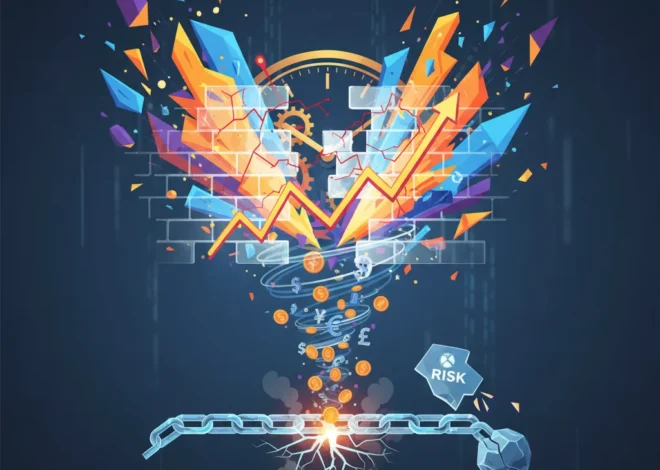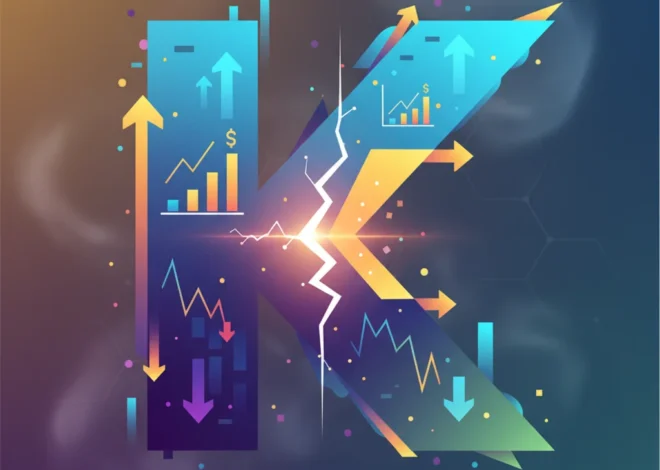
Decoding the Fed’s Next Move: John Williams on Inflation, Rate Cuts, and the Future of the Economy
In the complex world of finance and economics, the words of a top Federal Reserve official can move markets and shape global economic forecasts. Every turn of phrase is scrutinized, every statistic cited is analyzed, and every hint of future policy is debated by investors, business leaders, and policymakers alike. That’s why the recent in-depth interview of John C. Williams, President and CEO of the Federal Reserve Bank of New York, by the Financial Times provides a crucial roadmap for understanding the path ahead for the U.S. economy.
For anyone involved in investing, running a business, or simply planning their financial future, Williams’ insights are not just academic—they are a direct signal from one of the key architects of American monetary policy. In a wide-ranging discussion, he tackled the most pressing questions of our time: Is the war on inflation truly over? When can we realistically expect interest rate cuts? And just how resilient is the U.S. economy in the face of global headwinds? This post will break down the key takeaways from this critical interview, providing the context and analysis you need to navigate the evolving financial landscape.
The Final Mile: Navigating a “Bumpy Road” to 2% Inflation
The central theme of the Federal Reserve’s narrative for the past two years has been the fight against runaway inflation. After a period of aggressive rate hikes, the key question now is whether the job is done. According to Williams, while significant progress has been made, the journey isn’t over. He emphasized that he expects inflation to continue its gradual decline, projecting it to fall to around 2.5% by the end of this year before reaching the Fed’s 2% target in 2026 (source).
However, Williams was quick to caution that this path will be a “bumpy ride.” This phrasing is a deliberate choice, meant to manage expectations in the stock market and broader financial world. It signals that we should anticipate month-to-month volatility in inflation data without panicking or assuming the overall disinflationary trend has reversed. The Fed is looking at the totality of the data, not just a single hot CPI report.
This “wait-and-see” approach has profound implications. For investors, it suggests that market volatility will likely persist. For businesses, it means that the cost of capital may remain elevated for longer than previously hoped. The core message is one of patience; the Fed will not be rushed into a premature declaration of victory that could risk a second wave of inflation.
The Billion-Euro Bitter: Unpacking the Campari Group's Tax Evasion Allegations
The Million-Dollar Question: When Will the Fed Cut Rates?
If inflation is the diagnosis, interest rates are the medicine. The market has been eagerly anticipating the moment the Fed begins to lower the federal funds rate, which would ease borrowing costs for everything from mortgages to corporate debt. On this front, Williams remained resolutely non-committal, reinforcing the Fed’s data-dependent mantra.
He stated clearly that a rate cut in the immediate future is not his base case. “I don’t see any indicators now telling me… there’s a reason to change the stance of monetary policy now,” he remarked, adding that he needs more confidence that inflation is sustainably moving towards the 2% target (source). In essence, the Fed is in observation mode. To better understand what they’re looking at, here are the key economic indicators on the Fed’s dashboard:
| Economic Indicator | What the Fed Looks For | Recent Trend’s Implication |
|---|---|---|
| Personal Consumption Expenditures (PCE) Index | The Fed’s preferred inflation gauge; a sustained move towards the 2% annual target. | Has been cooling but remains above target, justifying the current restrictive policy. |
| Consumer Price Index (CPI) | A broader measure of inflation; the Fed watches for consistent cooling in core services. | Recent reports have been “bumpy,” reinforcing the need for caution before cutting rates. |
| Unemployment Rate & Job Growth | A strong but balanced labor market. Signs of significant weakening could accelerate cuts. | The market remains surprisingly robust, giving the Fed flexibility to hold rates higher for longer. |
| GDP Growth | Moderate, sustainable growth. A sharp slowdown could trigger rate cuts, while overheating could delay them. | The U.S. economy has shown remarkable resilience, arguing against the need for immediate policy easing. |
This framework shows that the Fed is balancing its dual mandate of price stability and maximum employment. With the labor market still strong, the primary focus remains squarely on inflation. This careful balancing act is crucial for the long-term health of the economy and the stability of the banking sector.
A Resilient Economy and the “Neutral Rate” Debate
One of the most surprising economic stories of the past year has been the sheer resilience of U.S. growth and the labor market, even with interest rates at two-decade highs. Williams acknowledged this strength, noting that the labor market is “still a very strong labor market” and that consumer spending has held up well (source). He forecasts unemployment to peak at a modest 4% this year, a far cry from the deep recession many predicted.
This economic strength is central to the Fed’s ability to be patient. A faltering economy would force their hand, but a strong one gives them the time needed to ensure inflation is fully contained. This has led to a growing debate in the world of economics about the neutral rate of interest (r-star)—the theoretical rate that is neither stimulative nor restrictive to the economy.
If the economy can thrive with rates above 5%, it suggests the neutral rate may have structurally shifted higher. While Williams didn’t commit to a new, higher estimate, he acknowledged it as a long-term question. A higher r-star would mean higher borrowing costs become the “new normal,” a paradigm shift that would impact everything from government debt sustainability to corporate investing decisions and the very models used to value assets in the stock market.
The Scottish Rental Crisis: A Canary in the Coal Mine for the UK Economy?
Navigating Future Risks: From Geopolitics to Financial Technology
No central banker’s outlook is complete without a discussion of risks. While the base case is positive, Williams is not complacent. The interview touched upon the complex global landscape, where geopolitical events could disrupt supply chains and commodity prices, potentially complicating the inflation picture.
Furthermore, within the domestic financial system, the Fed remains vigilant. While the major players in the banking system are well-capitalized, pockets of vulnerability, such as in commercial real estate, remain a concern. The evolution of financial technology also presents both opportunities and challenges. The rise of digital currencies and innovations in fintech and blockchain are transforming the financial plumbing, requiring regulators to adapt to new sources of potential systemic risk while harnessing the benefits of efficiency and innovation.
Williams’ perspective underscores that monetary policy is not conducted in a vacuum. The Fed must constantly scan the horizon for emerging threats that could derail an otherwise resilient economy.
Beyond the Balance Sheet: Why Financial Literacy is the Most Critical Investment in Today's Economy
The Takeaway: Patience is the Ultimate Strategy
So, what should investors, business leaders, and the general public take away from John Williams’ comprehensive interview? The overarching message can be distilled into a single word: patience.
The Federal Reserve is not in a rush. They are pleased with the progress on inflation but are determined to see the job through to the end. They see a strong economy that does not require urgent stimulus, giving them the flexibility to wait for unequivocal proof that price stability has been restored. For those in the market, this means that betting on rapid, deep rate cuts is a risky strategy. For business leaders, it reinforces the need to plan for a higher-for-longer interest rate environment.
Ultimately, Williams painted a picture of a central bank that is confident in its strategy but humble about the uncertainties ahead. The path forward for the U.S. economy is one of careful, data-driven navigation, not bold, pre-emptive maneuvers. In a world craving certainty, the most certain thing for now is the Fed’s commitment to wait.


